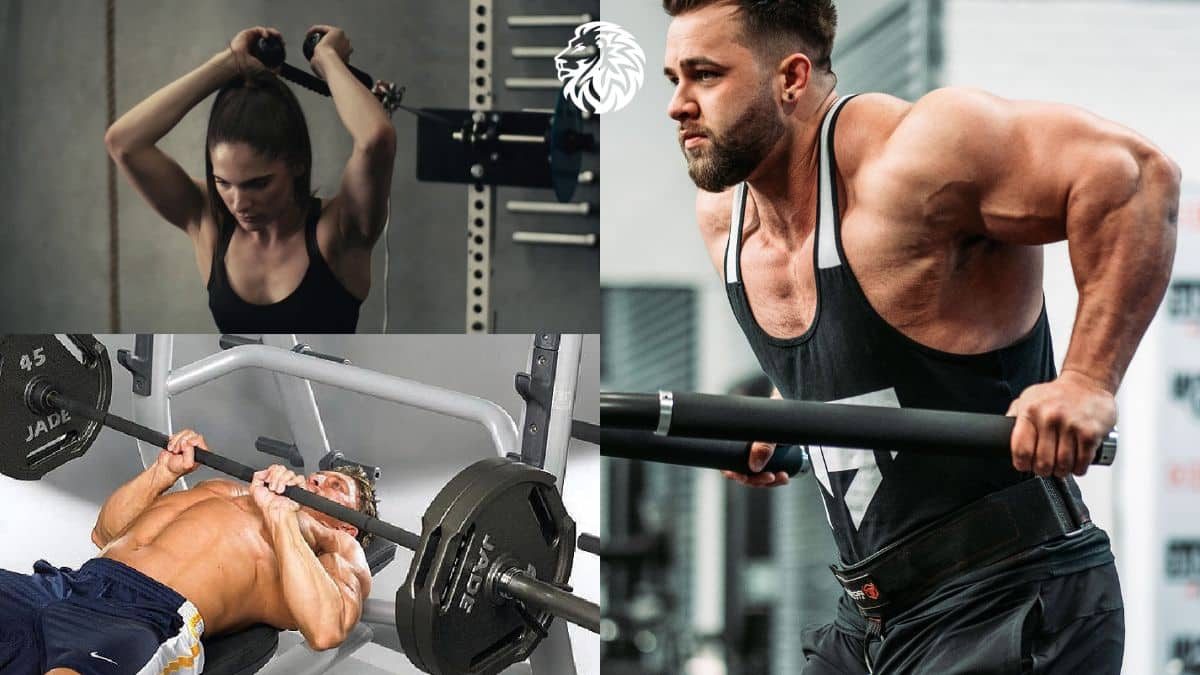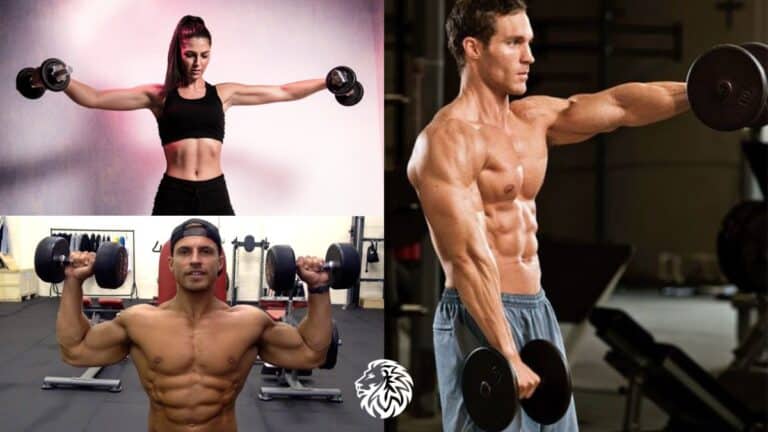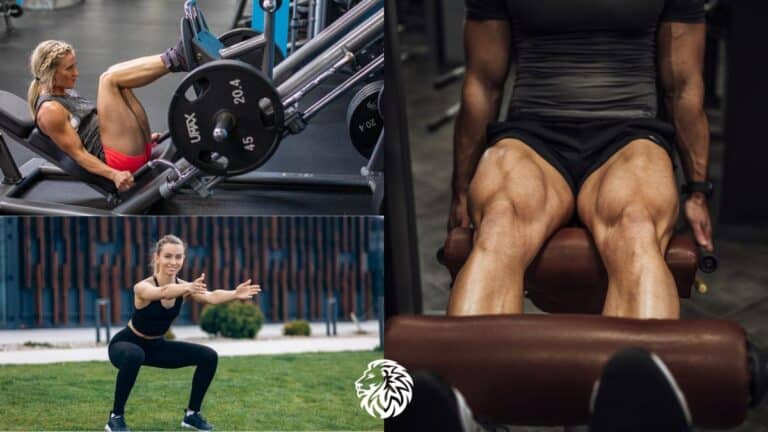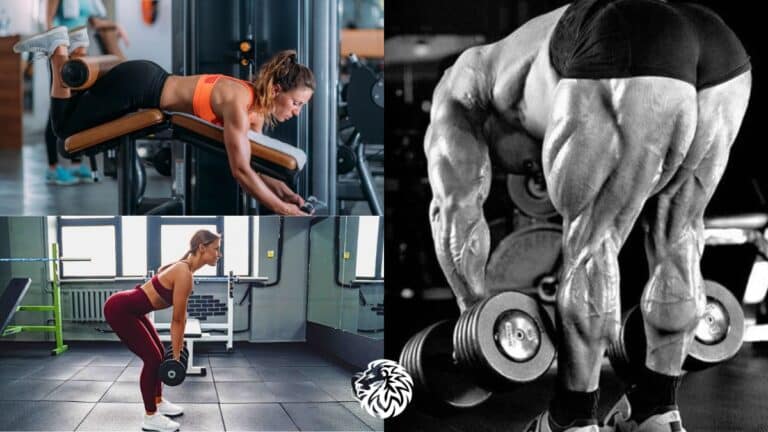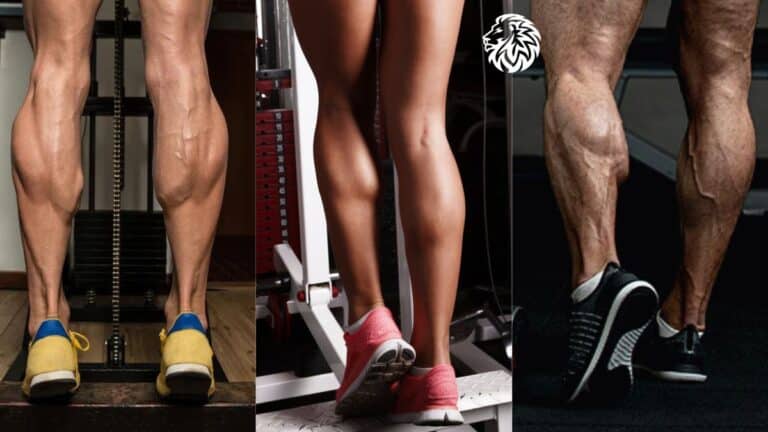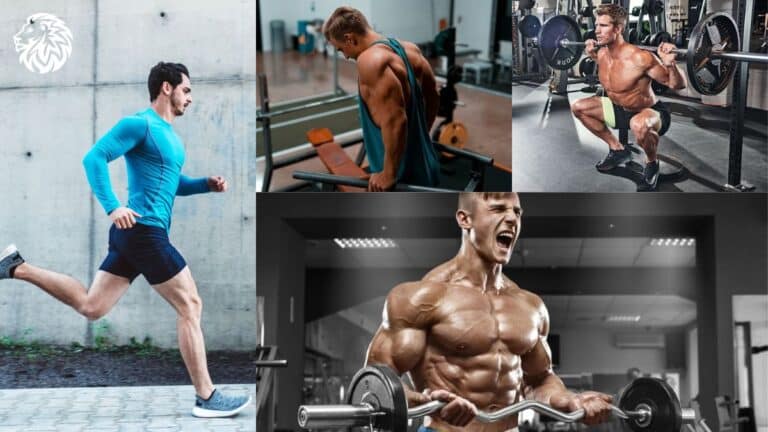The muscles located at the back of the upper arm are called triceps. Triceps are important for both arm strength and a good-looking appearance. While biceps often get more attention, triceps actually make up a bigger part of the arm and are crucial for balancing the development of your arms. Strong triceps are essential for upper body strength, which is important for everyday activities and sports. They play a key role in pushing movements, like opening a door or doing a bench press.
It’s easy and beneficial to include triceps exercises in your workout routine. This article discusses three exercises that effectively work your triceps from different angles, helping you develop your muscles comprehensively. You can add these exercises to your existing workout routine, whether you’re focusing on strength, muscle building, or toning. Consistency and proper technique are important for results and injury prevention.
As you work on improving your arm strength and appearance, these exercises will guide you in developing well-defined triceps, contributing to a stronger and more balanced upper body.
Anatomy of the Triceps
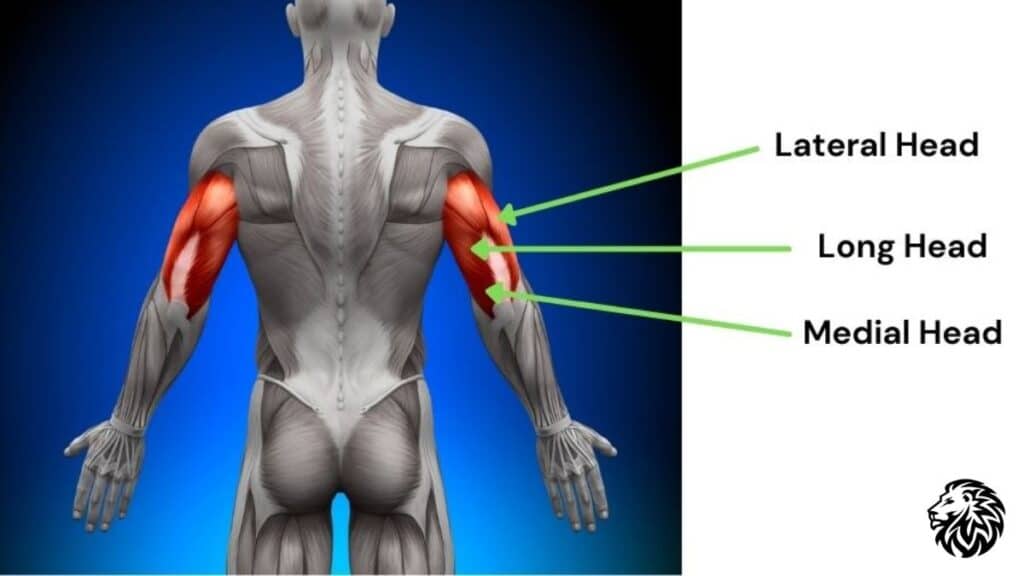
The triceps brachii, or triceps, is a major muscle at the back of the upper arm. It’s mainly responsible for straightening the arm by extending the elbow joint. Structurally, the triceps has three distinct parts: the long head, medial head, and lateral head. Each part starts from different areas of the arm and shoulder and comes together as a single tendon attached to the elbow.
The long head, originating from the scapula, is unique because it crosses both the shoulder and elbow joints. It’s highly involved in overhead movements. The lateral head, which contributes to the ‘horseshoe’ shape of well-developed triceps, starts from the upper humerus and is most visible from the side. The medial head, located beneath the long and lateral heads, provides extra force for elbow extension and is active in movements requiring precise control.
For balanced triceps development, it’s important to target all three parts. This approach ensures not only a symmetrical appearance but also functional strength. Different exercises engage these parts to different degrees. For instance, overhead movements focus on the long head, while pressing movements work better for the lateral and medial heads. By including various exercises that target each part, you can achieve complete triceps development, leading to improved arm strength, better posture, and a more complete upper-body muscle profile.
Preparing for Your Triceps Workout
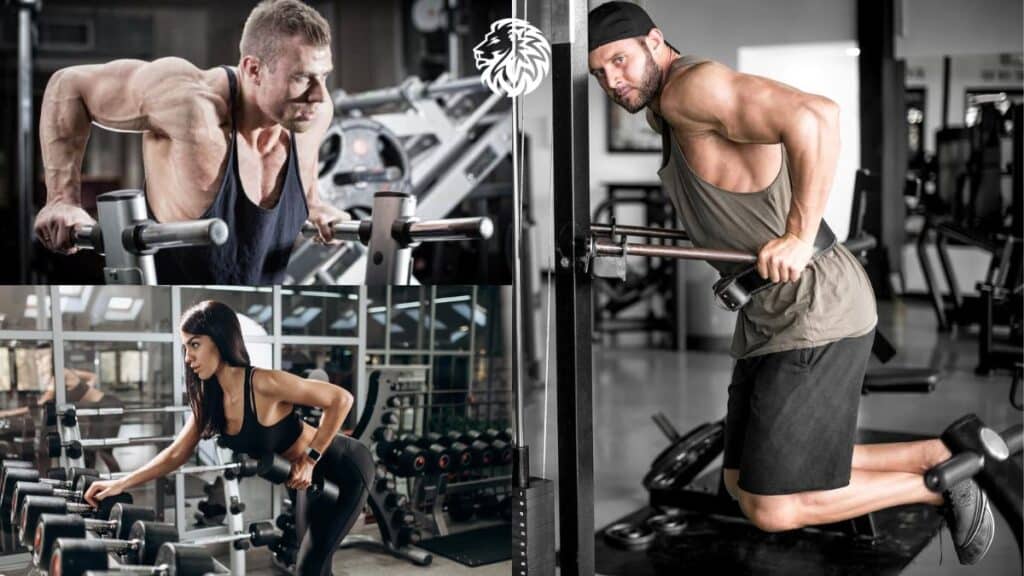
Warm-Up Essentials
Warming up before any workout, especially one that targets a specific muscle group like the triceps, is crucial for several reasons. Firstly, it increases blood flow to the muscles, making them more pliable and less prone to injury. Secondly, a good warm-up primes the nervous system, enhancing your coordination and muscle activation during the workout. This preparation is key to maximizing the effectiveness of your exercises while minimizing the risk of strain or injury.
Recommended warm-up exercises for a triceps-focused session include:
- Arm Circles: Start with small circles, gradually increasing to larger ones. This exercise warms up the shoulder joints and the triceps.
- Push-Ups: Begin with a few slow, controlled push-ups. They engage the triceps, chest, and shoulders, preparing them for more intense work.
- Triceps Stretch: Hold your elbow overhead and gently pull towards the opposite side. This stretch targets the triceps directly, improving flexibility.
- Light Cardio: Activities like jumping jacks or a short jog can increase overall body temperature and blood flow, preparing your body for exercise.
Safety Tips
Proper form and technique are non-negotiables when it comes to exercising, particularly for strength training. Good form ensures that the right muscles are being targeted and reduces the risk of injuries.
Key points for maintaining proper form in triceps exercises:
- Elbow Positioning: Keep your elbows close to your body to effectively target the triceps and reduce strain on the elbow joint.
- Controlled Movements: Avoid using momentum to lift weights. Slow, controlled movements ensure your triceps are doing the work.
- Posture: Maintain a neutral spine in all exercises. This minimizes the risk of back injuries and ensures maximum engagement of the target muscles.
To avoid common injuries:
- Don’t Overload: Lifting too heavy too soon can strain your triceps and elbows. Start with lighter weights and gradually increase.
- Listen to Your Body: If an exercise causes pain (not to be confused with normal muscle fatigue), stop and reassess your technique or the suitability of the exercise.
- Rest and Recovery: Overworking your muscles without adequate rest can lead to overuse injuries. Ensure you have rest days for muscle recovery.
By adhering to these warm-up and safety protocols, you’ll be well-equipped to undertake a triceps workout that is both effective and safe.
The Three Key Triceps Exercises
Exercise 1: Close-Grip Bench Press
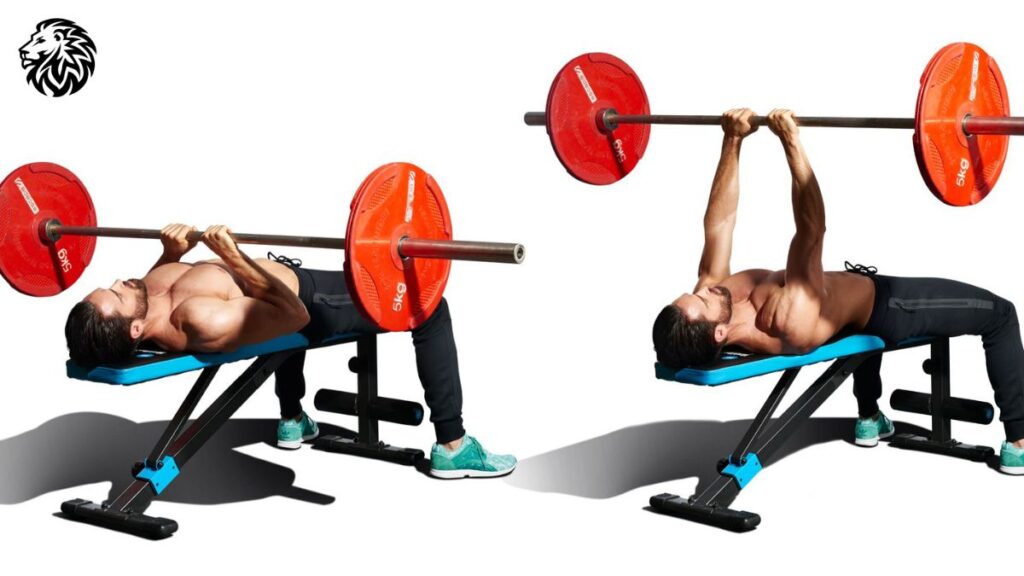
Description and Benefits: The Close-Grip Bench Press is a powerful exercise for targeting the triceps, particularly the medial and lateral heads, while also engaging the chest and shoulders. This variation of the traditional bench press shifts the focus from the pectorals to the triceps by altering the grip width.
Benefits include:
- Strengthening the overall triceps muscle group.
- Improving pushing strength which is beneficial for other exercises like push-ups and overhead presses.
- Providing a compound movement that stimulates more muscle fibers across the upper body.
Step-by-Step Guide:
- Starting Position: Lie flat on a bench with your feet firmly planted on the floor. Grip the barbell with hands slightly narrower than shoulder-width apart.
- Lift Off: Unrack the barbell, holding it straight over your chest with arms extended.
- Lowering the Bar: Inhale and slowly lower the barbell towards the lower part of your chest. Keep your elbows close to your body as you lower the weight.
- Pressing Up: Exhale and push the barbell back to the starting position by extending your arms. Focus on using your triceps to drive the movement.
- Repeat: Perform the desired number of reps maintaining form.
Common Mistakes and How to Avoid Them:
- Flaring Elbows: Allowing your elbows to flare out reduces triceps engagement and puts more strain on the shoulders. Keep your elbows tucked in to maximize triceps activation.
- Excessive Weight: Lifting too heavy can lead to form breakdown and injury. Start with a manageable weight and focus on proper technique before increasing the load.
- Losing Wrist Alignment: Keep your wrists straight and aligned with your forearms. Bending the wrists can lead to strain and reduces the force you can apply.
- Improper Grip Width: Gripping too narrow can strain your wrists, while too wide a grip shifts focus back to the chest. Find a comfortable grip where your forearms are vertical at the bottom of the lift.
By following this guide and avoiding these common mistakes, the Close-Grip Bench Press can be a highly effective exercise for building stronger, more defined triceps.
Exercise 2: Triceps Dips
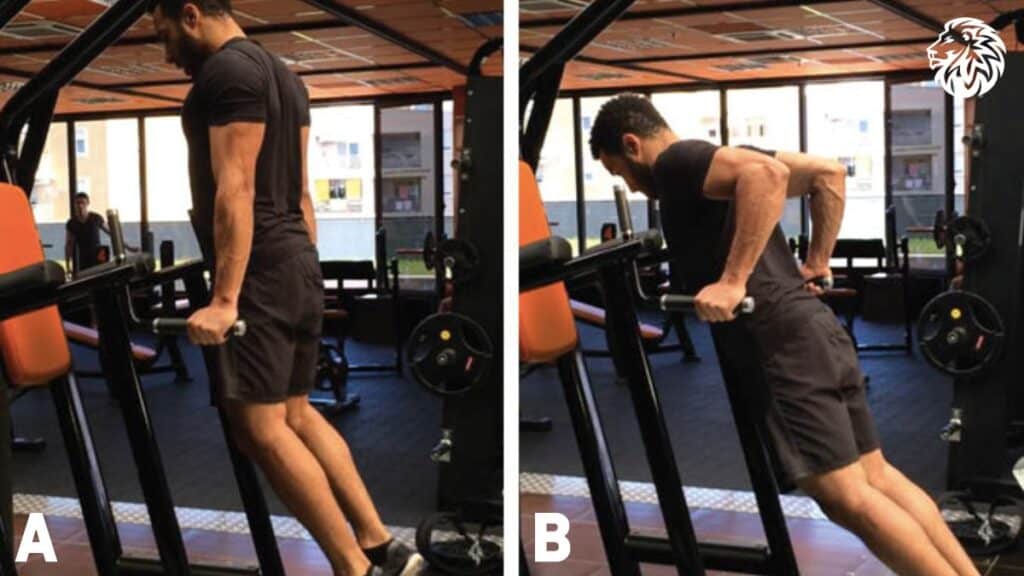
Description and Benefits: Triceps Dips are a versatile bodyweight exercise that primarily targets the triceps. They also engage the shoulders and the chest to a lesser extent. This exercise is effective due to its use of natural body weight, making it easily adaptable for various fitness levels.
Benefits include:
- Strengthening and toning the triceps.
- Enhancing upper body muscular endurance.
- Improving functional strength for daily activities that require pushing motions.
Variations for Different Levels:
- Bench Dips (Beginner Level): Performed using a bench or sturdy chair. Feet are placed on the floor, making the exercise less challenging than a full dip.
- Straight-Leg Bench Dips (Intermediate Level): A progression from the basic bench dip, performed with legs straight out in front to increase resistance.
- Assisted Dips (Intermediate to Advanced Level): Performed on parallel bars with an assistance band or a dip machine to help support some of your body weight.
- Full Triceps Dips (Advanced Level): Performed on parallel bars or dip station without assistance. This variation requires significant upper body strength and control.
Technique Tips:
- Elbow Alignment: Keep your elbows pointed straight back and aligned with your body throughout the dip. Avoid letting them flare out to the sides.
- Depth of Dip: Lower your body until your elbows are at about a 90-degree angle. Going lower can put unnecessary strain on the shoulder joint.
- Posture: Maintain a slight forward lean throughout the movement. Keep your chest up and shoulders back to engage the triceps effectively.
- Controlled Movement: Move in a controlled manner, focusing on using your triceps to push up to the starting position. Avoid using momentum or jerky movements.
- Breathing: Inhale as you lower your body and exhale as you push back up.
By incorporating these variations and technique tips, triceps dips can be an effective exercise for individuals at varying levels of fitness, contributing significantly to the development of stronger and more defined triceps.
Exercise 3: Overhead Triceps Extension
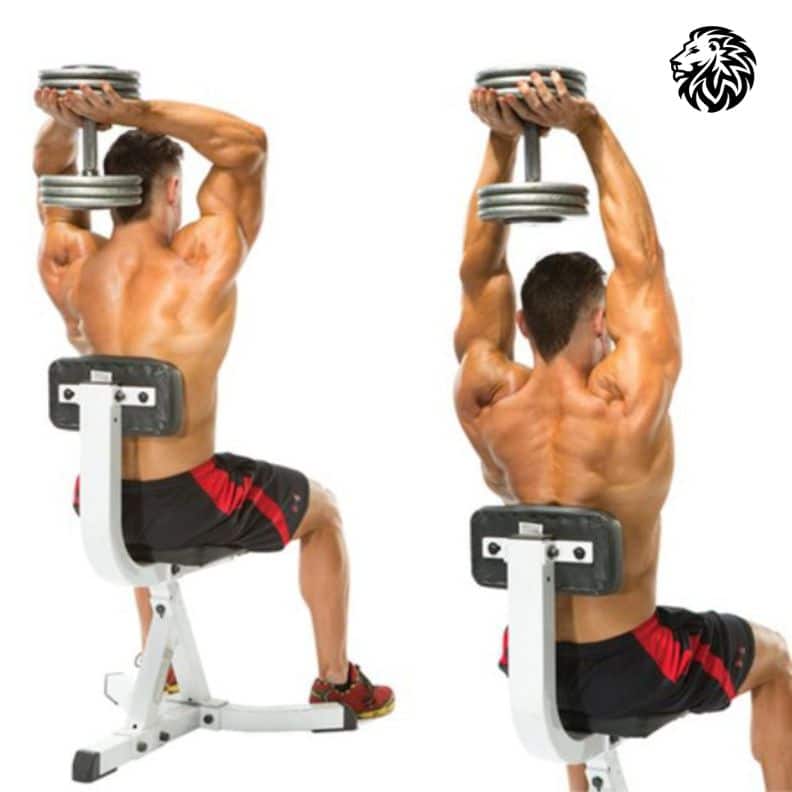
Description and Benefits: The Overhead Triceps Extension is a targeted exercise that isolates the triceps, with a particular focus on the long head of the muscle. This movement involves extending the elbows against resistance above the head, which engages and strengthens the triceps.
Benefits include:
- Focused isolation of the triceps, particularly the long head.
- Improvement in arm symmetry and muscular balance.
- Functional benefits for any activities involving overhead arm movements.
Equipment Options:
- Dumbbell Overhead Triceps Extension: Suitable for beginners to advanced levels. Can be performed with one or two hands.
- E-Z Bar Overhead Triceps Extension: The E-Z bar’s angled grip can be easier on the wrists and allows for a more comfortable grip.
- Cable Machine Overhead Triceps Extension: Provides constant tension on the triceps throughout the movement. Ideal for a more controlled and stable exercise.
Proper Form and Execution:
- Starting Position: Stand with feet shoulder-width apart. If using a dumbbell or E-Z bar, grasp the weight with both hands and lift it over your head until your arms are fully extended.
- Lowering the Weight: Inhale and slowly bend your elbows to lower the weight behind your head. Keep the upper arms close to your head and elbows pointing forward.
- Extension: Exhale and use your triceps to lift the weight back to the starting position.
- Repeat: Complete the desired number of repetitions while maintaining form.
Form Tips:
- Elbow Position: Keep your elbows stationary and close to your head. Avoid letting them flare out to the sides.
- Range of Motion: Aim for a full range of motion, lowering the weight until your forearms are just below parallel to the floor.
- Control the Movement: Move in a slow, controlled manner. Avoid using momentum to lift the weight.
- Spine Posture: Keep your spine neutral. Avoid arching your back excessively by engaging your core throughout the exercise.
By carefully selecting the appropriate equipment and adhering to proper form, the Overhead Triceps Extension can be a highly effective exercise for enhancing triceps strength and definition.
Enhancing Your Triceps Training
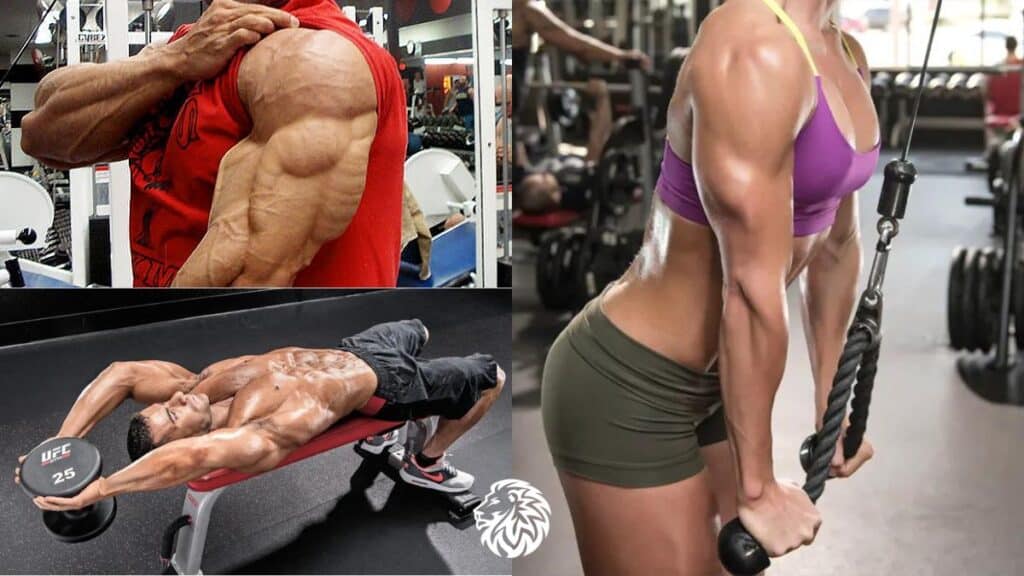
Progressive Overload
Explanation of the Concept: Progressive overload is a fundamental principle in strength training and muscle building. It involves gradually increasing the demands on your musculoskeletal system to continually challenge your muscles, leading to increased strength and muscle size. This can be achieved by increasing the weight, modifying the number of repetitions or sets, enhancing the exercise complexity, or reducing rest time between sets.
How to Apply it to Triceps Exercises:
- Increase Weight: Regularly add more weight to your triceps exercises as your strength improves.
- More Repetitions or Sets: If increasing weight isn’t feasible, consider doing more repetitions per set or adding more sets with the same weight.
- Alter Exercise Variants: Progress from simpler to more complex variations of triceps exercises (e.g., from bench dips to parallel bar dips).
- Decrease Rest Intervals: Shortening the rest period between sets can intensify the workout and improve muscular endurance.
Supplemental Exercises
Additional Exercises for Triceps Development:
- Skull Crushers: Lying triceps extensions with a barbell or dumbbells.
- Diamond Push-Ups: Push-ups with a close hand position to focus more on the triceps.
- Triceps Kickbacks: Bending forward with a dumbbell in hand and extending the arm back.
Balancing Triceps with Other Arm Muscles: For balanced arm development, it’s crucial to train the biceps, forearms, and shoulders alongside the triceps. This approach prevents muscle imbalances and ensures overall arm aesthetics and functionality.
- Biceps Exercises: Include curls (barbell, dumbbell, hammer, and preacher curls).
- Forearm Exercises: Wrist curls and reverse wrist curls to strengthen the forearms.
- Shoulder Exercises: Incorporate overhead presses, lateral raises, and front raises for well-rounded shoulder development.
By implementing progressive overload and including supplemental exercises, you can significantly enhance your triceps training, leading to stronger and more aesthetically balanced arms. Remember to maintain a holistic approach by training all aspects of the arms for symmetry and functional strength.
Recovery and Nutrition
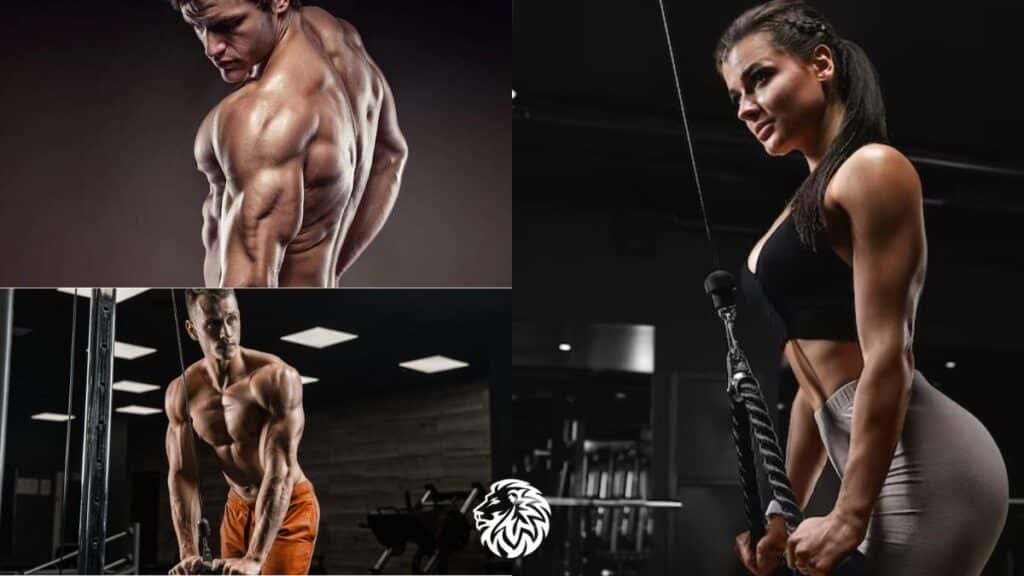
Importance of Rest and Recovery for Muscle Growth: Rest and recovery are as crucial as the workout itself for muscle growth. During exercise, muscle fibers undergo stress and microscopic damage. The repair and rebuilding of these fibers during rest periods lead to muscle growth and increased strength. Insufficient rest can lead to overtraining, increased risk of injury, and stagnated progress.
- Adequate Sleep: Aim for 7-9 hours of quality sleep per night to facilitate muscle recovery and growth.
- Active Recovery: Gentle activities like walking, yoga, or stretching on rest days can improve circulation and aid in muscle repair.
- Rest Days: Schedule regular rest days to allow muscles time to recover. For triceps, a recovery period of 48-72 hours is typically recommended between intense workouts.
Nutritional Tips for Muscle Building: Proper nutrition is vital for muscle recovery and growth. A balanced diet rich in protein, carbohydrates, and healthy fats supports muscle repair and energy needs.
- Protein: Essential for muscle repair and growth. Include lean meats, fish, eggs, dairy, and plant-based protein sources in your diet.
- Carbohydrates: Provide the energy needed for workouts and recovery. Focus on complex carbs like whole grains, fruits, and vegetables.
- Healthy Fats: Important for hormone production and overall health. Include sources like avocados, nuts, and olive oil.
- Meal Timing: Consuming protein and carbs post-workout can aid in muscle recovery and glycogen replenishment.
Hydration and Its Role in Muscle Health: Hydration is often overlooked in muscle health. Muscles are about 75% water, and even mild dehydration can impair muscle function and recovery.
- Water Intake: Aim to drink at least 8-10 glasses of water per day, more if you are active or live in a hot climate.
- Electrolyte Balance: During intense workouts, replenishing electrolytes like sodium and potassium is crucial to maintain muscle function and prevent cramps.
Incorporating these recovery strategies and nutritional guidelines can significantly enhance your muscle-building efforts and overall well-being, allowing for more effective triceps training and better results.
Conclusion
In summary, developing stronger and well-defined triceps requires a holistic approach that includes targeted exercises, proper preparation and safety, progressive overload, balanced training, and adequate recovery and nutrition.
Key points to remember:
- Anatomy of the Triceps: Understanding the structure and function of the triceps muscle is crucial for effective training.
- Preparing for Your Workout: A proper warm-up and adherence to safety tips, including maintaining correct form, are essential to prevent injuries.
- The Three Key Exercises: Incorporating the Close-Grip Bench Press, Triceps Dips, and Overhead Triceps Extension into your routine targets the triceps effectively.
- Enhancing Your Training: Applying the principle of progressive overload and including supplemental exercises ensures continuous improvement and balanced arm development.
- Recovery and Nutrition: Rest, nutrition, and hydration are fundamental for muscle growth and overall health.
Remember, the journey to stronger triceps is a marathon, not a sprint. Consistency in your workouts, coupled with patience and dedication to proper technique and recovery, will yield significant results over time. Stay motivated and patient, and the strength and definition in your triceps, as well as your overall upper body, will progressively improve, reflecting your hard work and commitment.
References and Further Reading
- Spruce, M. (n.d.). Most effective triceps exercises. Verywell Fit. Retrieved from https://www.verywellfit.com/most-effective-triceps-exercises-1231027
- Bodybuilding.com. (n.d.). The 10 best muscle-building triceps exercises! Bodybuilding.com. Retrieved from https://www.bodybuilding.com/content/the-10-best-muscle-building-triceps-exercises.html
- Men’s Health. (n.d.). The best tricep workouts and exercises for men. Men’s Health. Retrieved from https://www.menshealth.com/fitness/g19547150/best-tricep-workouts/
- Men’s Journal. (n.d.). 15 best tricep exercises and workouts of all time. Men’s Journal. Retrieved from https://www.mensjournal.com/health-fitness/15-best-tricep-exercises-and-workouts-of-all-time-mens-journal
- SELF. (n.d.). The best triceps exercises. SELF. Retrieved from https://www.self.com/gallery/best-triceps-exercises
- Muscle & Strength. (n.d.). Triceps exercises. Muscle and Strength. Retrieved from https://www.muscleandstrength.com/exercises/triceps
- Everyday Health. (n.d.). Top exercises for stronger triceps. Everyday Health. Retrieved from https://www.everydayhealth.com/fitness/top-exercises-for-stronger-triceps/
